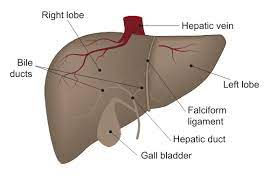New Treatment Developed To Save Damaged Liver
New Treatment Developed To Save Damaged Liver
Edinburgh: Scottish scientists have developed a new treatment that could prevent the progression of malignant liver disease.
Cutting edge therapy
is the first method that can be used to treat cirrhosis. Cirrhosis is a
condition in which liver tissue is damaged by eating a high-fat diet, drinking
alcohol, and long-term infections with hepatitis B and C.
There is no medicine or treatment to prevent or reverse this condition.
The scientists created
large amounts of macrophages using monocytes in the laboratory and transplanted
them into the livers of patients.
liver treatment
Experts believe that people with severe cirrhosis make fewer effective macrophages due to damage to the liver caused by the disease. Researchers are hopeful that these cells, made outside the body, will reverse the condition by better healing the affected liver.
In this treatment, developed at the University of Edinburgh, scientists take blood samples from patients and extract white cells called monocytes from them. These cells are infection-fighting cells that usually stay in the blood for a few days and later become macrophages (cells that repair damaged tissue) in the body's tissues
The results of the research were presented at a conference held in Boston, USA, in which it was reported that in the experiment, 26 patients with cirrhosis underwent this treatment, and this year there was no obvious deterioration in their condition, but 24 such Of the patients who did not receive this therapy, four became critical and three died.
Professor Stuart
Forbes, a hepatologist and head of research at the University, said that more
research is needed to determine the effectiveness of this treatment in humans,
but that this technique for treatment has shown an impact in creatures. The
specialists are supported by the consequences of the review.





0 Comments